If you like a challenge, foraging deer mushrooms (Pluteus cervinus) is for you. These super common fungi grow prolifically around the world, but their identification can be a little tricky. While the deer mushroom is not considered a culinary delicacy, it is edible and worth knowing, if only because it is so prevalent.

Jump to:
All About Deer Mushrooms
This rather bland fungus is also commonly known as deer shield or fawn mushroom. The scientific name reflects this, with “cervinus” translating to “of or pertaining to a deer. Tawny, deerskin brown.” Deer mushrooms grow around the world and are most common in spring and fall. They grow on dead and dying hardwood and aren’t very picky about the tree species.
These mushrooms are quite humdrum looking, some might say boring, with a dull tannish brown cap and whitish or brownish stem. The cap color can vary quite widely, but it is always some shade of brown, going as light as beige or buff and as dark as chocolate.

Deer mushrooms are extremely common, especially in temperate regions. They are edible but usually not foraged because there is little cap “meat” – the cap is 90% gills and 10% thin cap flesh. These mushrooms are also super brittle, easily breaking apart and dissolving into bits. Sometimes getting them home in one piece is the biggest challenge. Thankfully, there are no poisonous lookalikes, so you can forage them with ease once you correctly identify them.
The challenge with identifying the deer mushroom comes about when you’re trying to determine which species of Pluteus you have found. There are over 300 species in this vast genus, with about 40 occurring in North America, and all of them are wood-rotters with free gills and pink spore prints. Many are edible, some are psychoactive, and others simply aren’t big enough to make any foraging effort worthwhile.
A study in 2014 introduced the possibility that the traditional Pluteus cervinus may actually be made up of several almost identical species. DNA evidence noted some sure differences, but more studies need to be done.

Deer Mushroom Identification Guide
Season
Spring through fall
Habitat
The deer mushroom grows from dead and rotting wood. Usually, it is found on hardwood, but sometimes it’ll grow on conifers, too. It will grow on rotting logs, tree stumps, and from decaying roots.
Often, it looks like the mushroom is growing from the ground, but really, it is growing from buried rotting wood. The deer mushroom can develop quite a long stem, growing from thoroughly buried wood.
These mushrooms grow singularly, in scattered groupings, or densely. They are most common in the eastern, midwestern, and southeastern states but also occur on the west coast.

Description
Cap
The cap of the deer mushroom is 1.75-4 inches wide and ranges from pale to dark brown, often with a tinge of gray or olive. The color varies widely by specimen; it may even be so light tan it looks buff or whitish. In youth, the mushroom is bell-shaped and wrinkled but quickly grows outwards until it is flattened and smooth. It commonly flips its gills up outwards when it is past maturity, so it looks like a dancer with many skirts.
At the center of the cap, there is usually a central bump, but this is not always the case. The center of the cap, with or without the upraised bump, is brown and slightly or moderately darker than the rest of the surface.
Deer mushroom caps are either bald (no adornments) or covered in very fine hair in the center. The surface is shiny and sticky when wet and is commonly radially streaked – this means you can see lines of darker and lighter colors that go from the center of the cap to the cap edge.

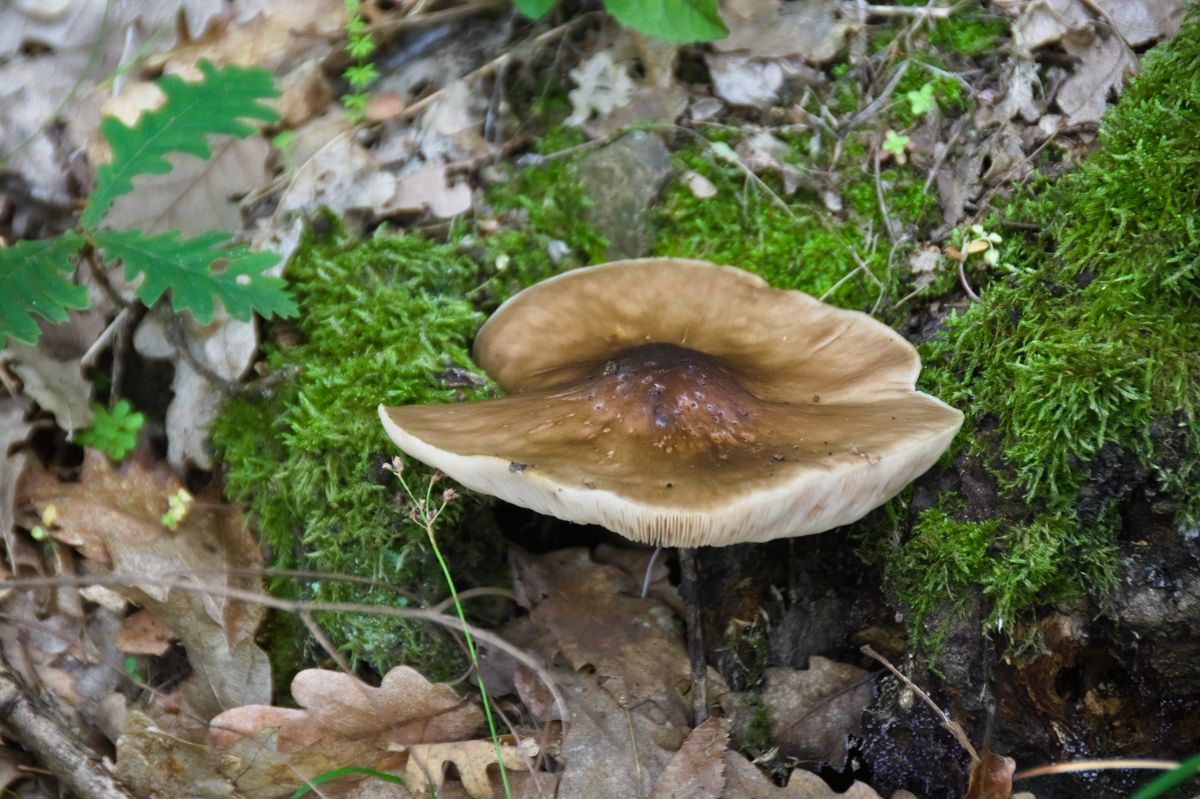
Gills
The gills are white, not attached to the stem, and crowded. With age, they turn pinkish and then dark peachy pink.
Stem
Deer mushrooms have long 2-5.25 inch long whitish stems that are usually covered in brown fibrous material. However, the stem may be just white or buff-tan colored. The base is slightly swollen or may be equal the entire length. The stem will discolor slightly near the base.
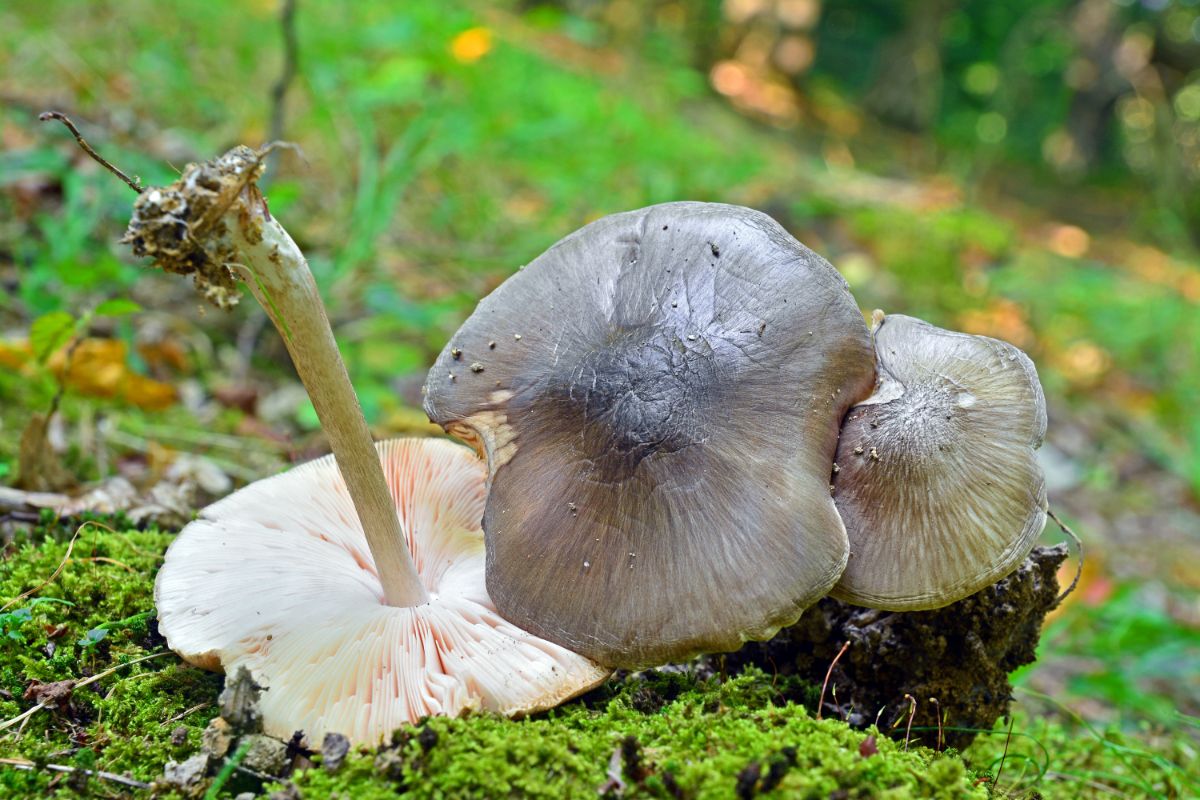
Flesh & Smell
It may smell a little bit like radishes or be absent of a distinctive odor.
Spore Print
The flesh of the deer mushroom is white and soft and does not change color when cut. The spore print is brownish pink.
As you can see, the variances in this species make it complicated to know precisely which Pluteus you’ve found. The deer mushroom:
- might have a light brown, dark brown, grayish brown, olive-brown, or buff to whitish colored cap
- may or may not have a central cap bump
- may have a smooth cap or very fine hairs over the center
- may have radial streaking on the cap or be a uniform color
- may have a whitish, bald stem or a whitish stem with brown fibers on it

Deer Mushroom Lookalikes
Pluteus petastus
This species looks almost identical to the deer mushroom and can be impossible to differentiate without a microscope. However, this mushroom grows primarily from wood chips, mulch, and sawdust and is more common in urban areas because of this. It also often looks like it’s growing from the ground but is instead growing from deeply buried woodchips.
It is most commonly found growing from roots and buried wood in places where trees have been recently removed. This species is widely distributed across North America but much more common east of the Rocky Mountains.
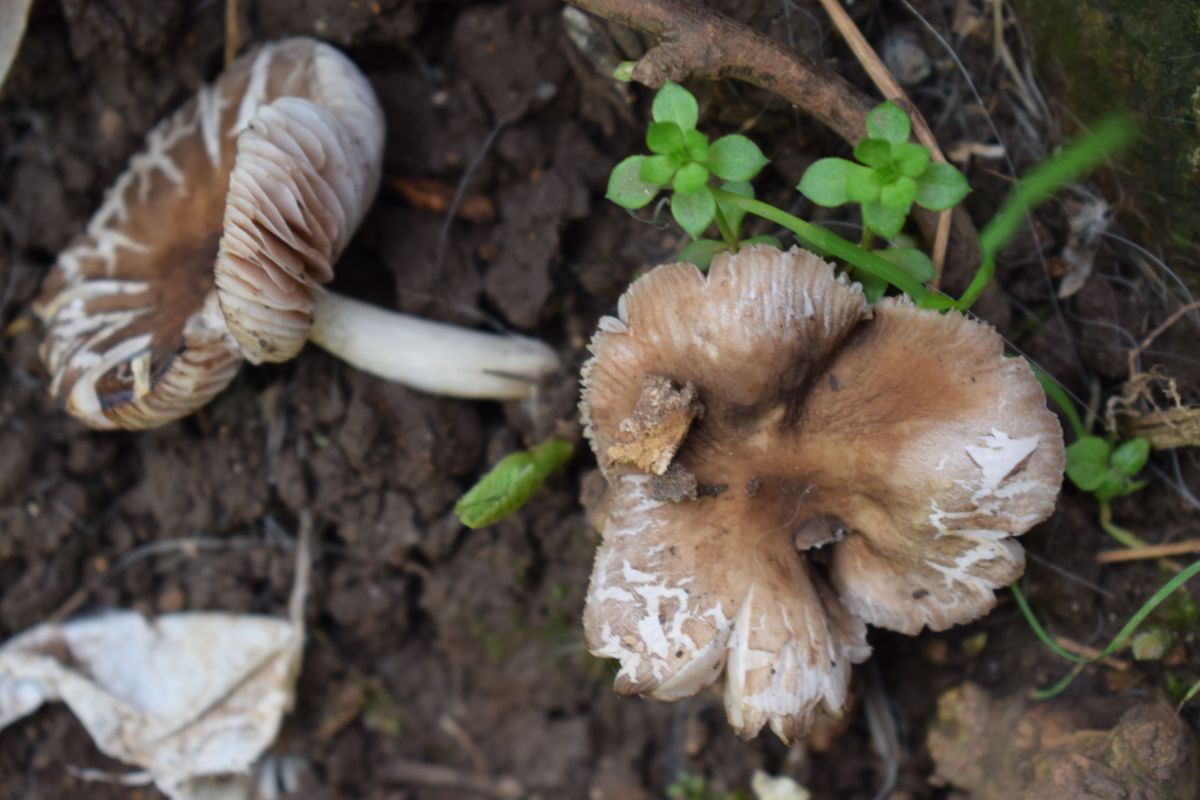
Pluteus americanus
The strong scent of geranium and a cap and stem that usually bruise blue are the two distinguishing differences between this species and the deer mushroom. In all other aspects, they look incredibly similar, with brownish or grayish caps, white gills, and a whitish stem. P. americanus is a psychedelic mushroom, so don’t mistake it for the deer mushroom unless you’re looking for that type of experience! This species occurs east of the Rocky Mountains and in eastern Russia.

Pluteus exilis
With brownish caps, white gills, and a whitish stem, this species is markedly similar to the deer mushroom. The key difference is where it grows – this is a west coast species, growing primarily in the PNW and California.
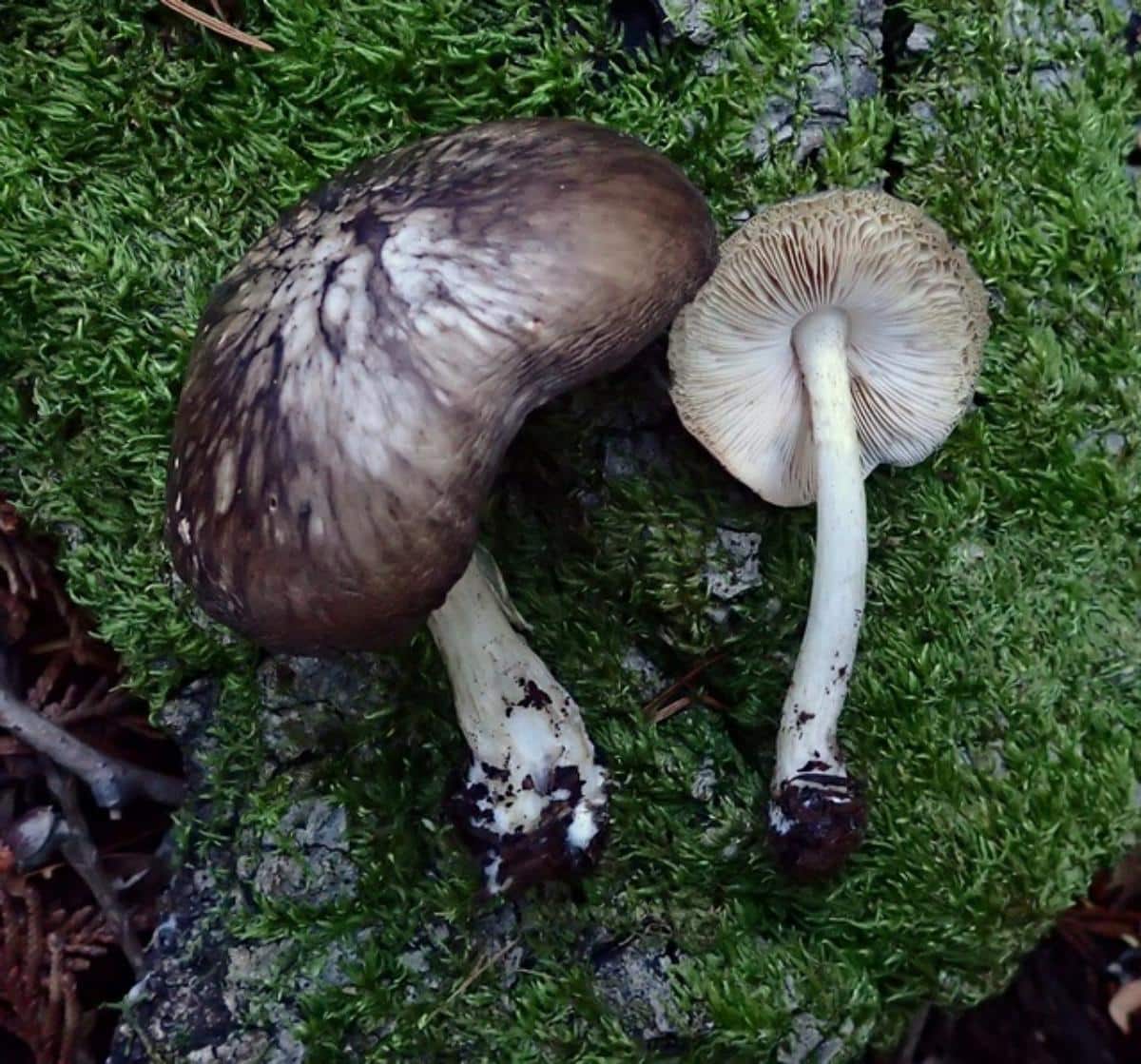
Entoloma Species
This is a broad genus with many species that look somewhat similar to the deer mushroom. The key differences are Entoloma gills are attached to the stem and grow from the ground, not from wood. Some Entoloma are poisonous, so be sure to check those gills!
Volvariella Species
These lookalike mushrooms share similar cap and stem colors, but they have volvas at the base of the stem. This is a rounded egg-like sac that the mushroom emerges. Deer mushrooms never have this volva sac.
Cooking With Deer Mushrooms
Most people ignore this edible species because of its bland flavor and brittle texture. It is one of the few species available to forage in spring, making it a nice find when there is nothing else fruiting.
Deer mushrooms spoil quickly in warm weather, so they should be refrigerated as soon as possible after being picked. Insects love these mushrooms, and older specimens can be pretty buggy. Only pick deer mushrooms when they are young and fresh for the best flavor and texture. Spring specimens usually stay fresh longer and have less insect damage.
Use deer mushrooms in any dish that calls for buttons or portobellos. They won’t be as dense or hearty but they substitute nicely.

Interested in learning about other edible North American mushrooms? Check out our guides to Edible Mushrooms in North America
Deer Mushrooms Common Questions
Are deer mushrooms psychedelic?
No. This is a culinary species. There are other species in the Pluteus genus that are psychedelic, so be aware while foraging and always be clear on your identification!

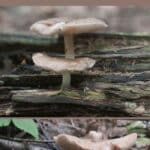



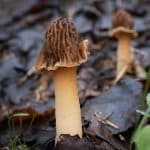



Kimberley says
Found these in upstate NY. Beautiful and firm. Pleasant aroma. We reviewed on dour sitea and a NA field guide. So we will try them with chicken and garlic. Hopefully, they will be as good as the oyster mushrooms from last week.
Thank you for your information. We are new to hunting and open to learning.
Jenny says
Fantastic! And, thank you! Would love to hear you thoughts on them